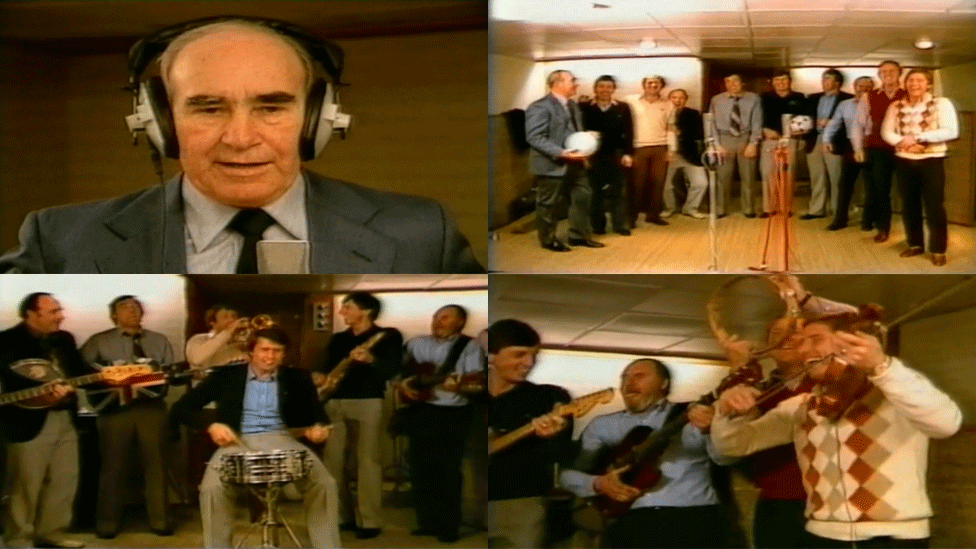1966 World Cup: England's tournament behind the scenes
- Published

England's stars won the World Cup but also mingled with the fans - an eager young supporter chased after Bobby Moore and Martin Peters as they went for a stroll near the hotel on the day of the quarter final win over Argentina
Fifty years ago, the 1966 World Cup was taking place in England - still the only time the football tournament has taken place in this country.
While some of the most recognisable photos of the occasion are well known, a host of other less famous images show a major sporting event taking place in comparatively innocent and relaxed times, with some of the best footballers in the world meeting fans, sightseeing and even feeding cows.
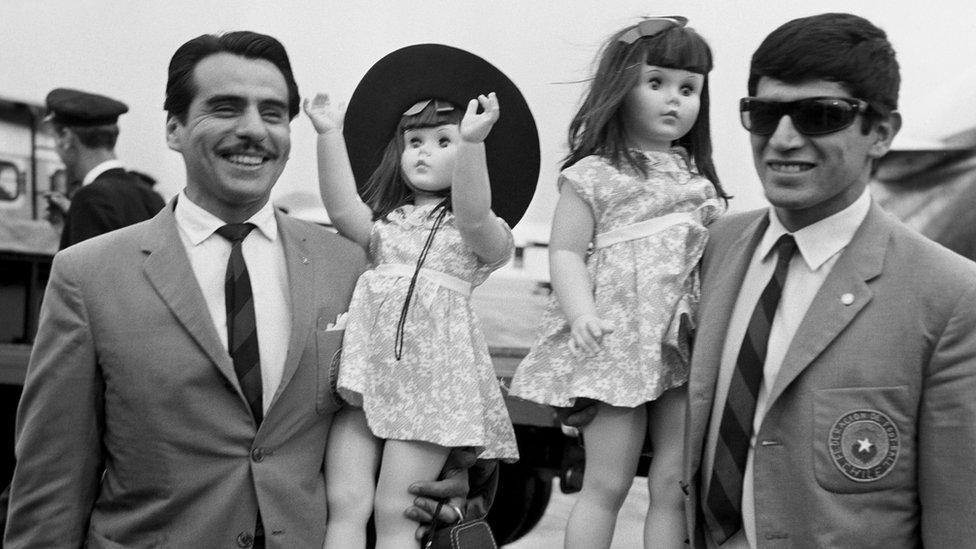
The 1966 World Cup was fun and games from the moment the competing teams arrived. Chile's Pedro Araya and Juan Olivares stepped off their plane at Heathrow carrying two giant dolls.
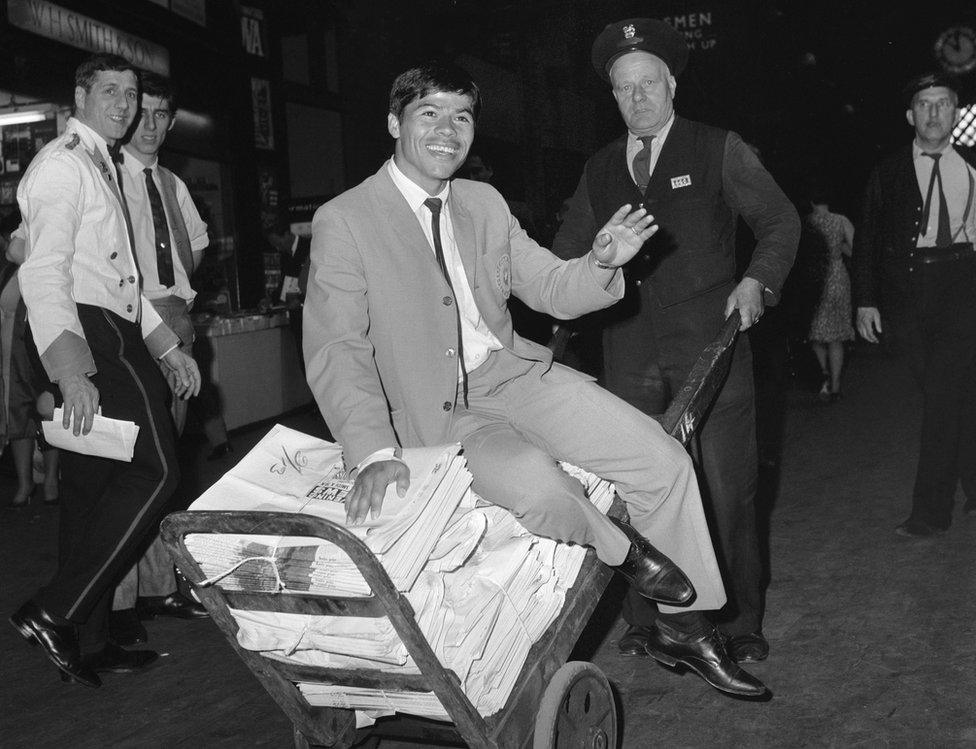
Chile spent a couple of days in London before heading north to play in Sunderland and Middlesbrough.
Humberto "Chita" Cruz got a ride on a porter's cart at King's Cross station before catching the train to the North East.

Chile's first opponents were Italy, who were also based in the North East, where three members of their squad took a break from training to feed a cow.
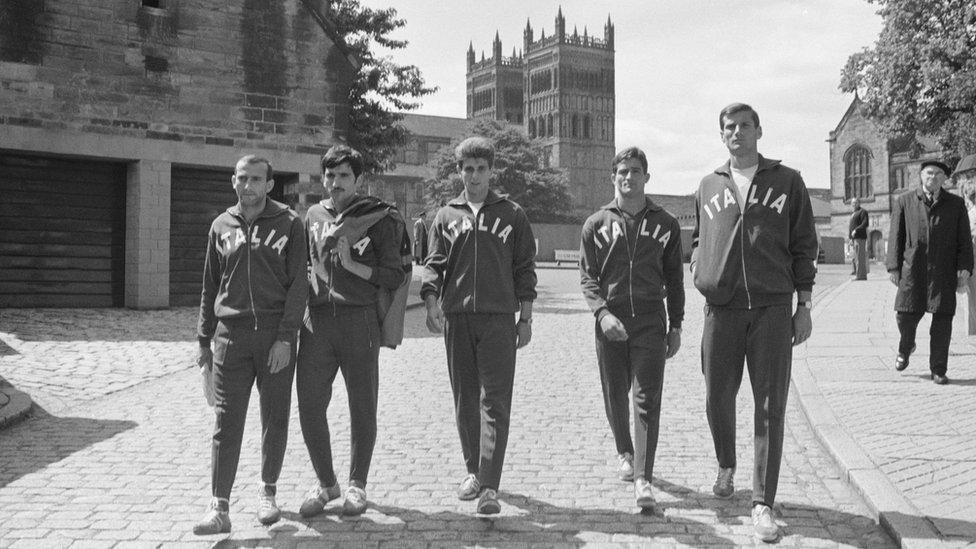
But some of Italy's off-the-field activities were better organised. These members of the squad looked thrilled to be visiting Durham Cathedral.
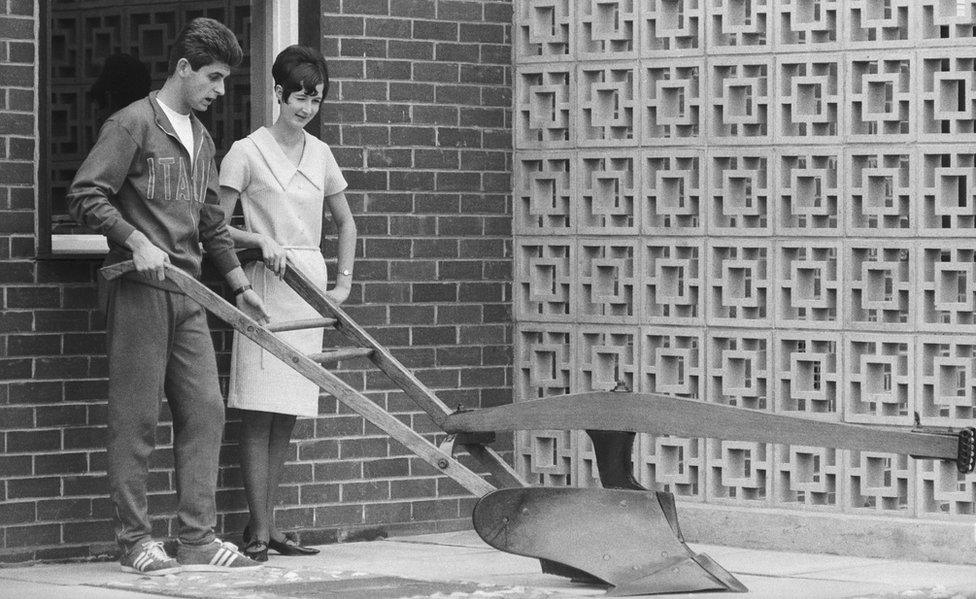
And Italian star Gianni Rivera was apparently welcomed into a woman's back garden to examine her plough.
Italy lost to North Korea, were eliminated at the group stage and were pelted with tomatoes when they arrived back home.
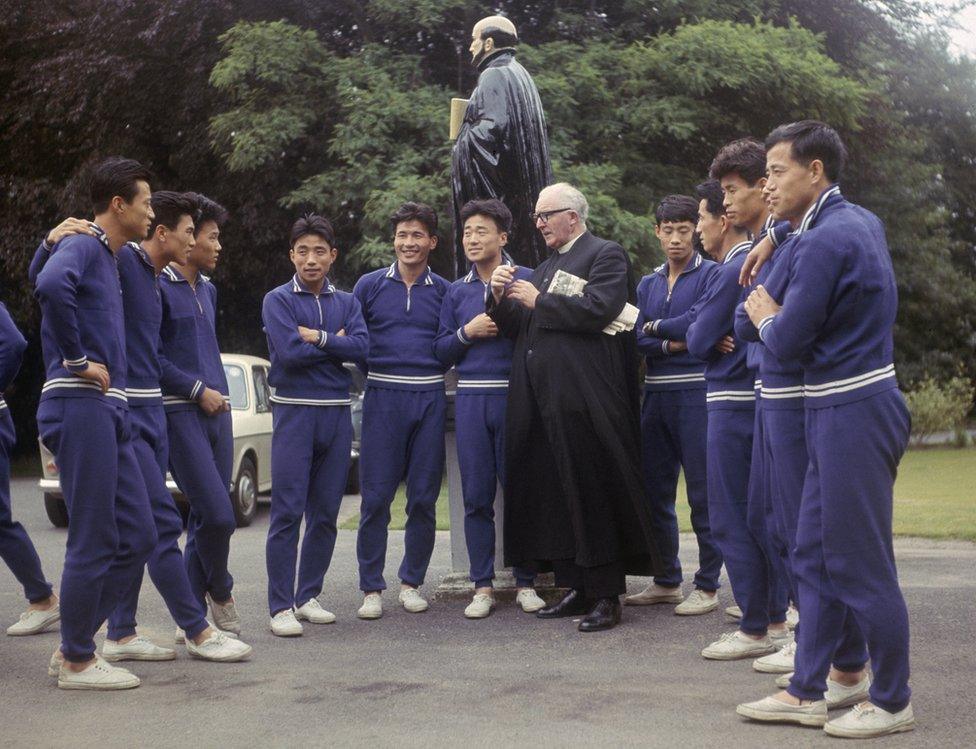
But it wasn't just beating Italy that helped North Korea enjoy their time in England. The team also met a priest.
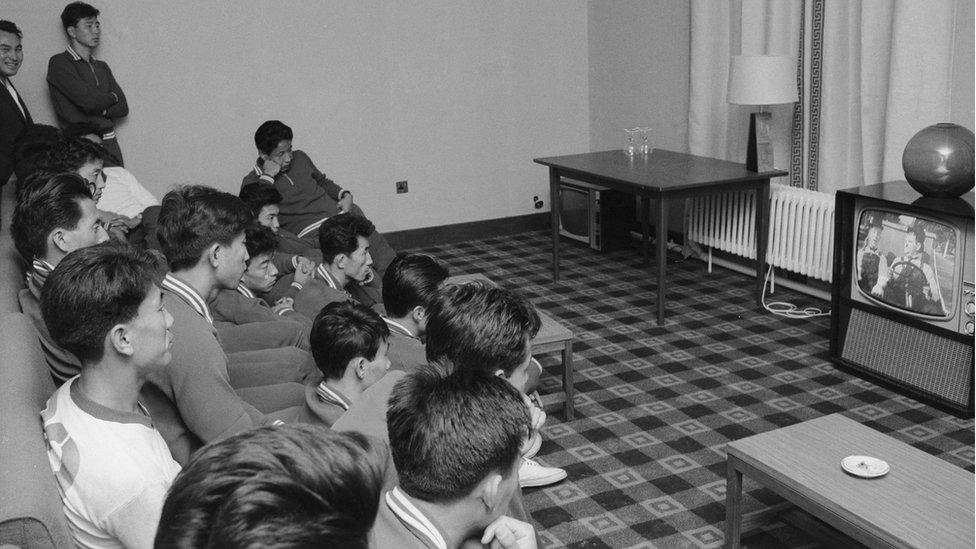
And the North Koreans experienced Western culture at their hotel in Middlesbrough, where they were snapped watching Laurel and Hardy comedy Towed In A Hole on television.
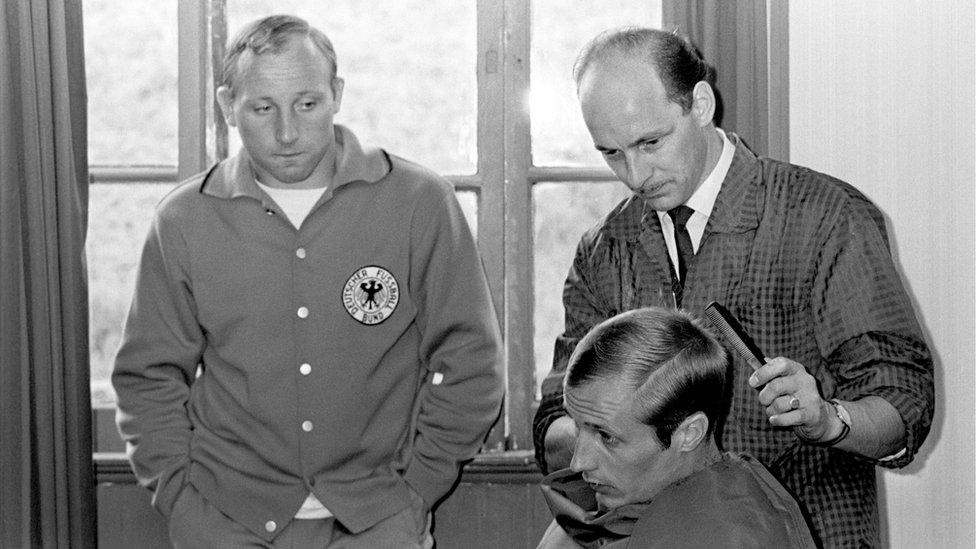
Another team to welcome the press photographers into their hotel were West Germany.
They reached the final and stayed in England long enough for Heinz Hornig to need a haircut from a local barber, excitedly watched by captain Uwe Seeler.
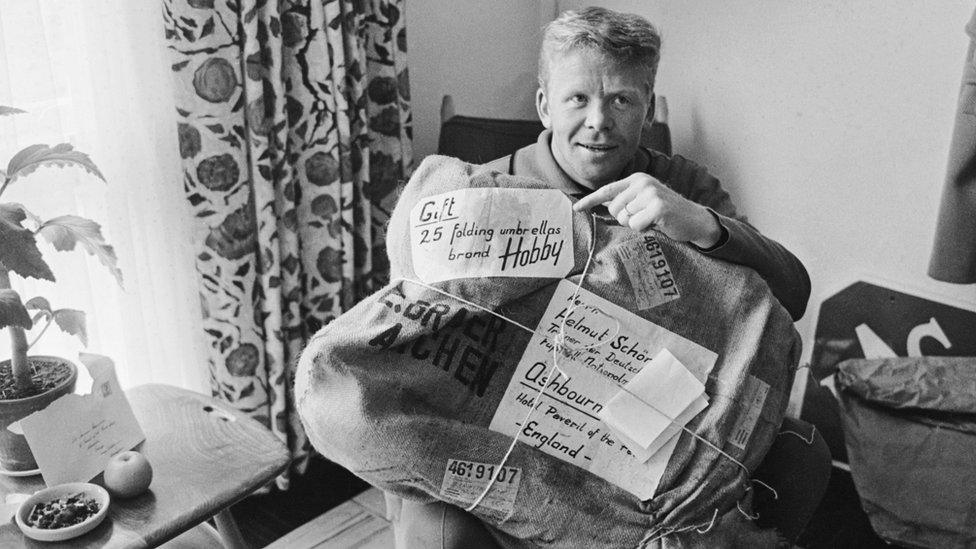
The West Germans realised they would need to cope with the English weather.
Helmut Haller - who would go on to open the scoring in the final - was the man tasked with handling the delivery of 25 folding umbrellas that arrived at their hotel in Derbyshire.
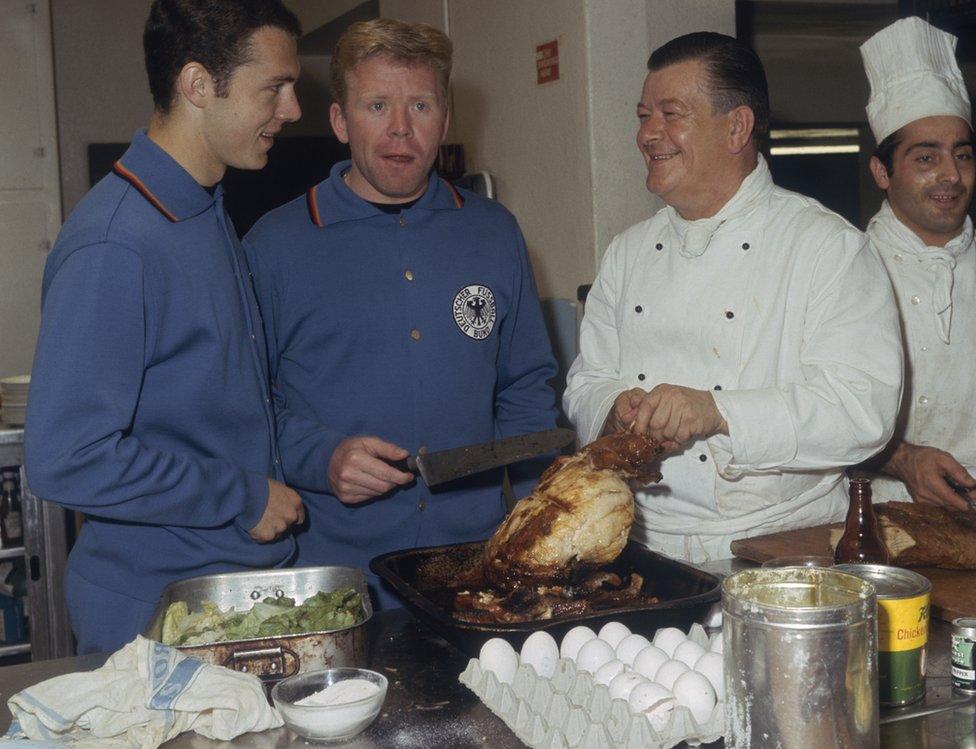
And Haller and his famous team-mate Franz Beckenbauer were transported into colour when they helped the chef at the Peak Hotel prepare dinner.

One man who saw Beckenbauer, Haller and their team-mates playing football was Swiss fan Emil Hollinger.
Intrepid Hollinger, a window cleaner, walked 810 miles from Zurich to Sheffield to see his national team play West Germany at Hillsborough. Switzerland lost 5-0.

The World Cup did not go well for for the legendary Pele - he limped off injured after being fouled and Brazil were knocked out in the group stages. But it did not stop him being besieged by autograph hunters.

And Pele was photographed doing nearly everything - getting a police escort through Manchester Airport, arriving at his hotel, speaking to a policeman, travelling by coach, meeting the sports minister, jogging past a boy in the Bolton rain, playing in goal in training, talking to a three-year-old girl through a train window, chatting in a doorway and waiting for his plane home at Heathrow.

One of Brazil's final engagements in England was to attend a reception in London for teams eliminated in the first round.
Pele had a little sausage as he chatted to Chile's Humberto Cruz, of riding on a station porter's cart fame.
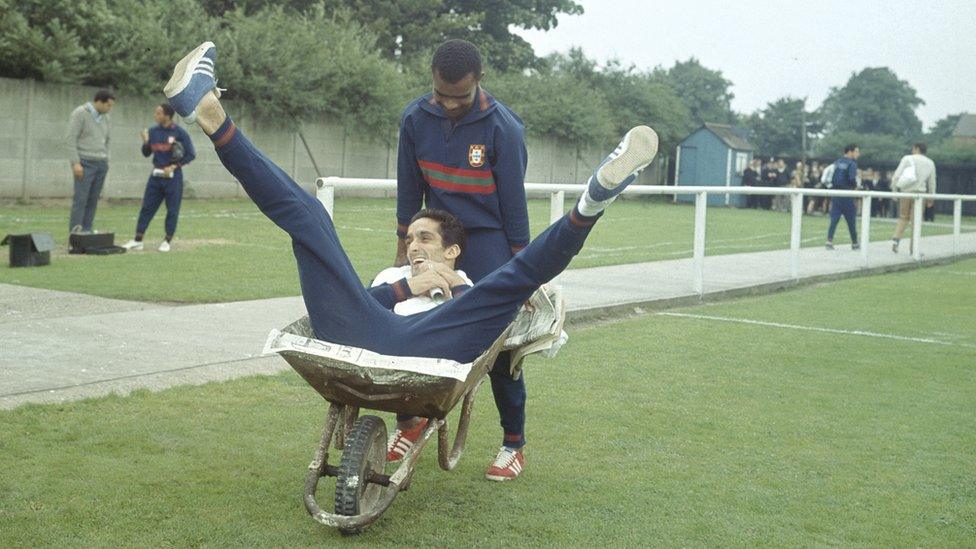
Many of the competing teams allowed both photographers and the general public into training sessions.
Portugal's Vicente Lucas pushed his team-mate Jose Torres in a wheelbarrow - the type of preparation that helped the Portuguese to third place in the tournament.
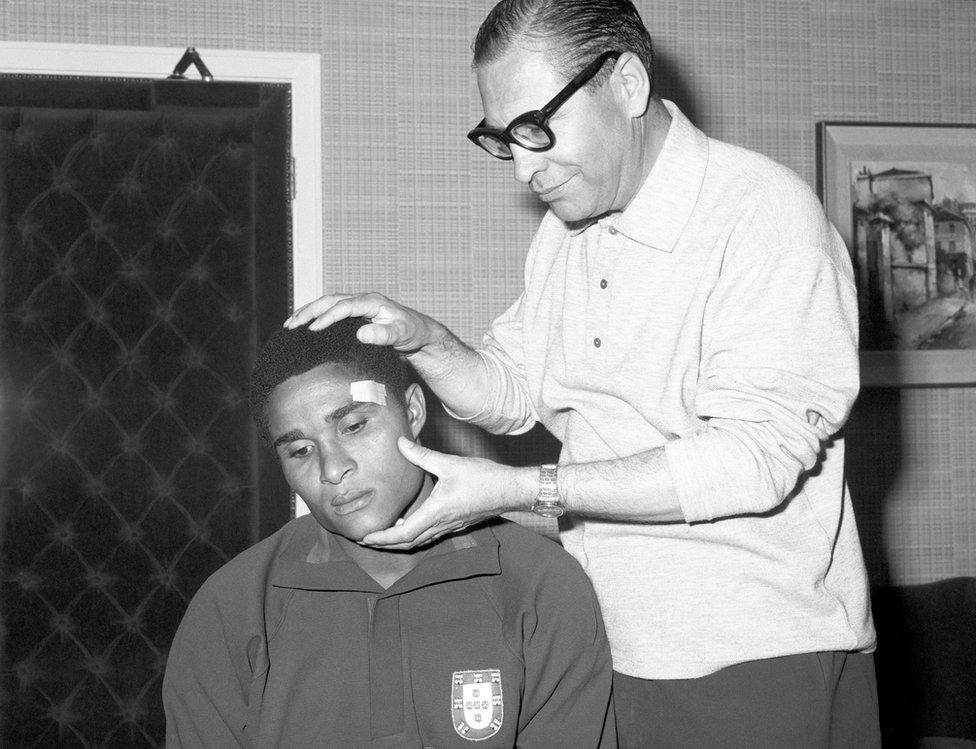
Portugal's willingness to let English photographers see the internal workings of their tournament extended to the medical room.
Whereas nowadays the state of fitness of an injured star player would usually be a closely-guarded secret, in 1966 snappers were allowed to see Dr Silva Rocha tend to the injured eyebrow of Eusebio, the tournament top scorer.
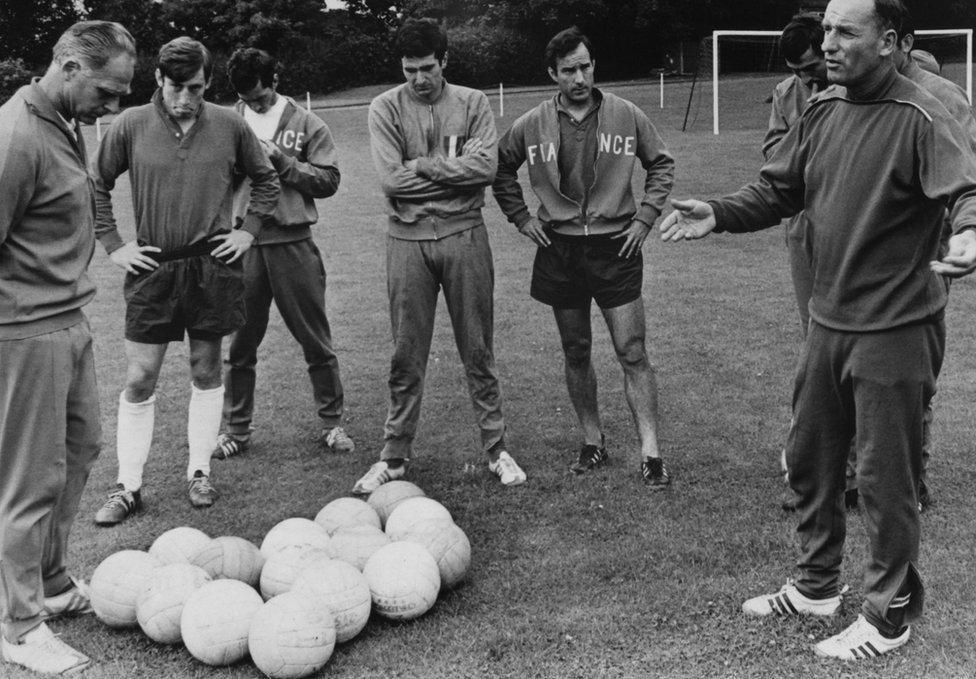
Photographers were given access to France's training session the day before their opening match against Mexico.
While coach Henri Guerin (right) addressed his men, they stared quizzically at some footballs. France did not win any of their three matches.
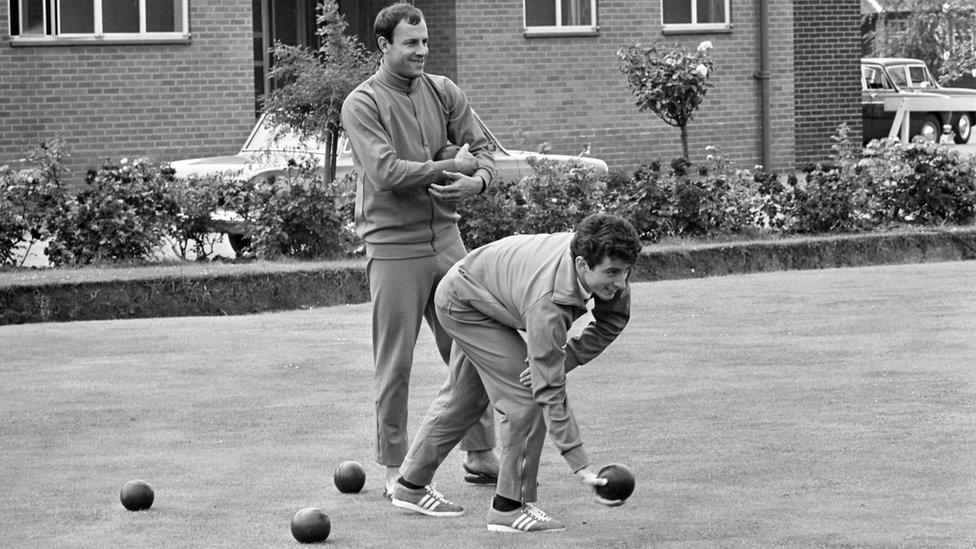
Argentina had no such trouble understanding sporting equipment. Carmeloa Simone and Alfredo Rojas tried their hand at lawn bowls in Birmingham.
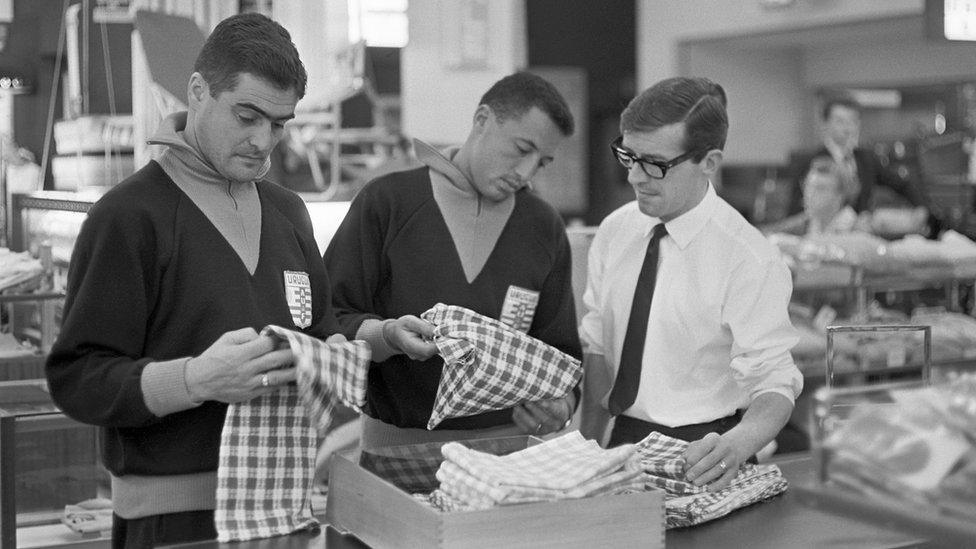
Like Argentina, Uruguay made the knock-out stages and were in England for several weeks. It gave Walter Taibo and Julio Cortes time to visit a textile factory.

Mexico threw themselves into British customs. Enrique Borja, Antonio Carbajal and Enrique Cisneros enjoyed admiring a photograph of the Queen.
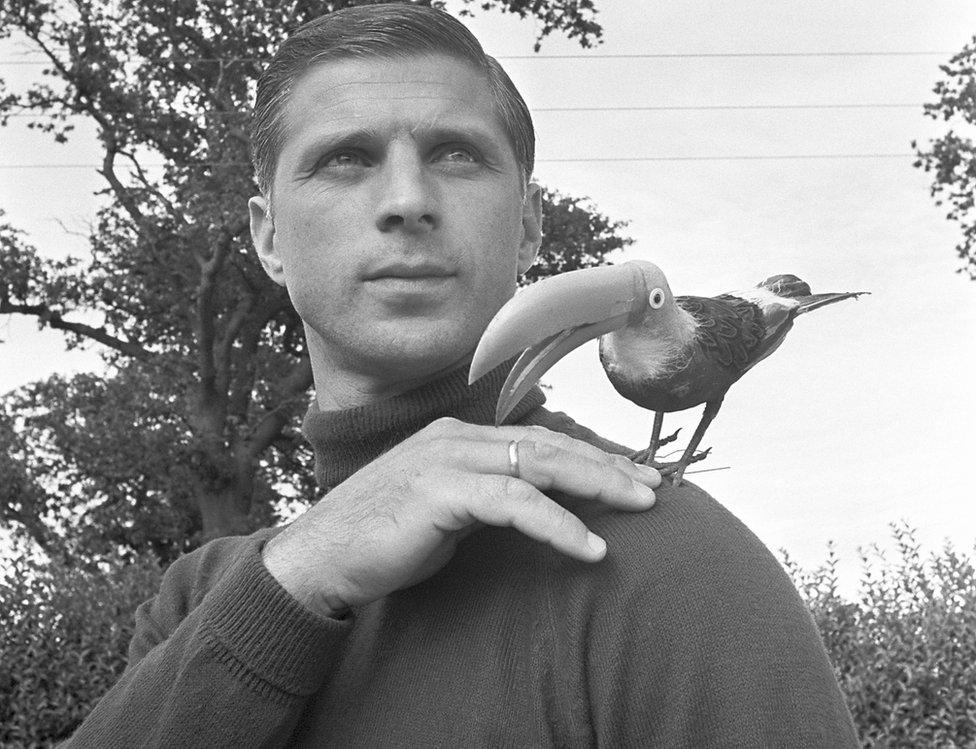
But some teams brought their own paraphernalia. Bulgaria goalkeeper Georgi Naidenov posed with the team's lucky mascot, a plastic toucan.
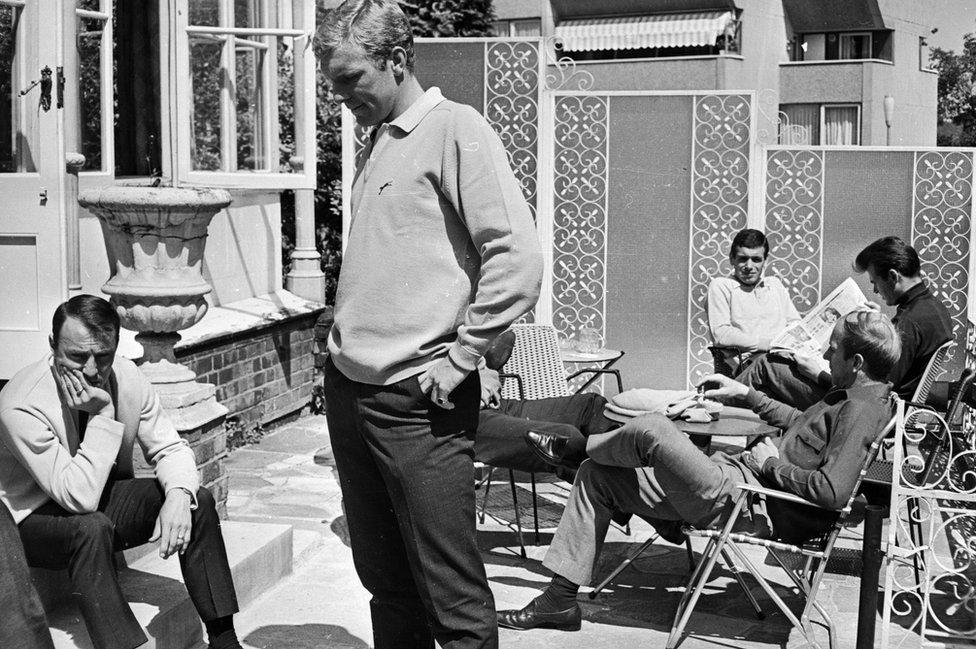
Of course many people's eyes were on the England team and they too let photographers in behind what could have been closed doors.
When Bobby Moore commiserated with Jimmy Greaves over losing his place in the team through injury it was in front of the cameras in the garden of the Hendon Hall Hotel.

It would seem some English fans were not that keen on Fifa 50 years ago - this time because England's semi-final was played at Wembley rather than Goodison Park.
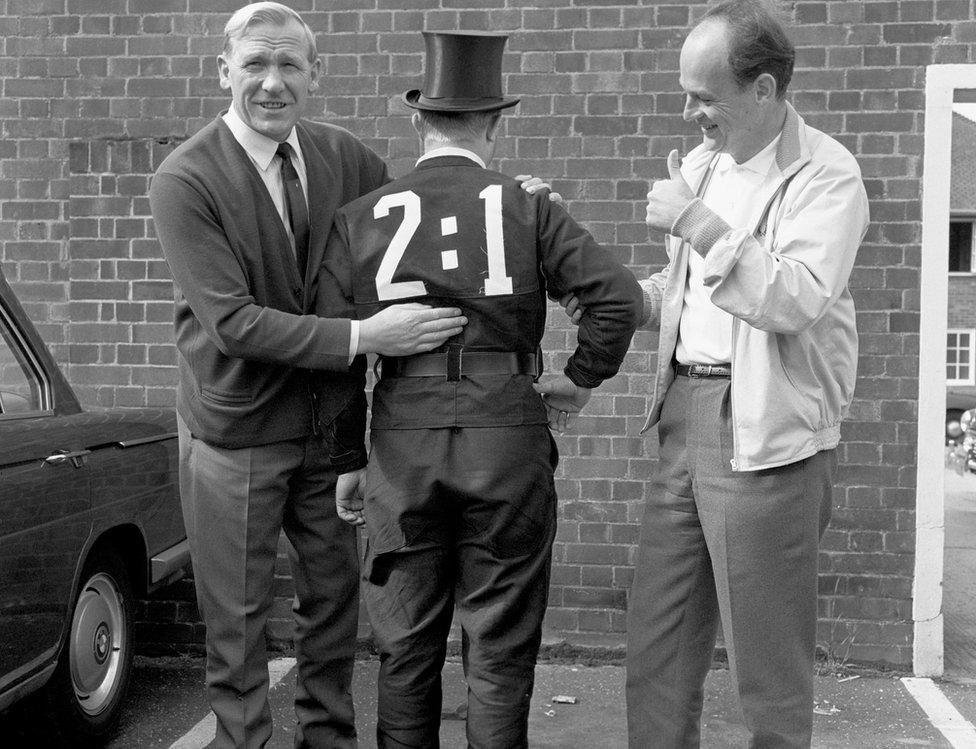
England took on West Germany in the final and on the morning of the game a German fan dressed as a lucky chimney sweep used the back of his jacket to predict a 2-1 win for his team.
He was congratulated on his confidence by former Manchester City goalkeeper Bert Trautmann (left), an advisor to the German team, and the squad's press officer Dr Wilfried Gerhardt.
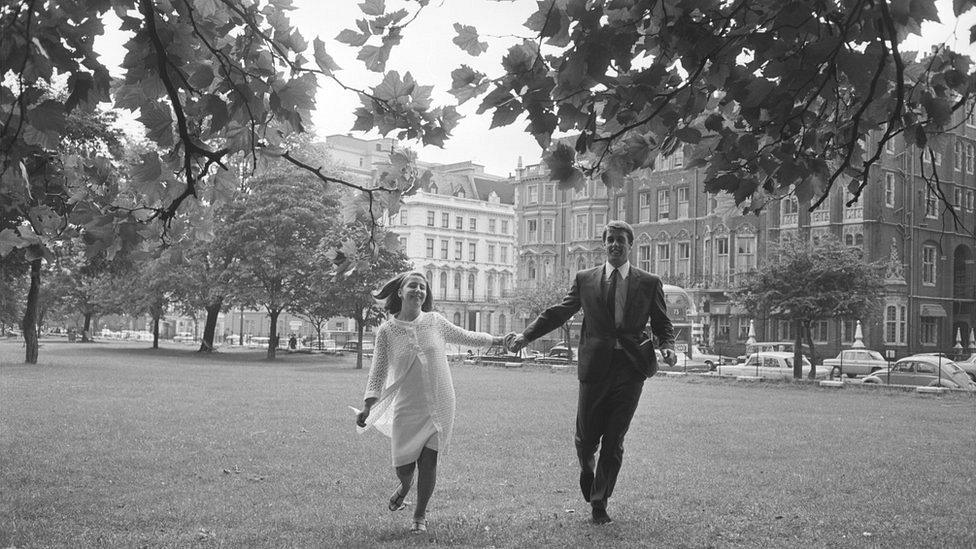
But, as you may have heard, England won the final 4-2 with a hat-trick from Geoff Hurst.
A reception for the new champions was held at the Royal Garden Hotel in Kensington and Hurst was still in high spirits as he skipped away from the venue with his wife Judith the next day.
World Cup 66 Live relives the 1966 World Cup final on Saturday 30 July, the 50th anniversary of England's triumph. Listen live on BBC Radio 2 and BBC 5 Live, or watch on the Red Button. Read more: World Cup 66 Live. Or have a go at 1966 World Cup Spot the Ball from CBBC.
- Published24 July 2016
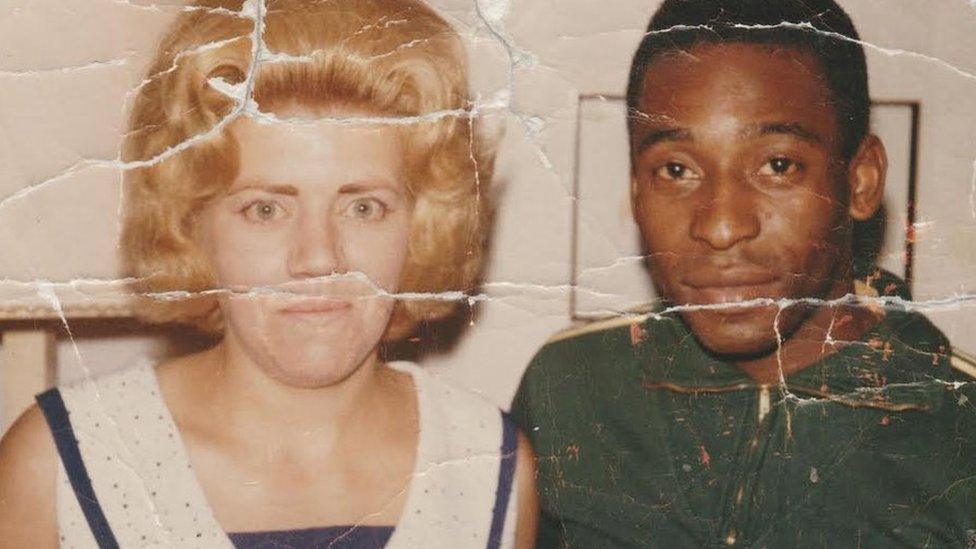
- Published11 July 2016
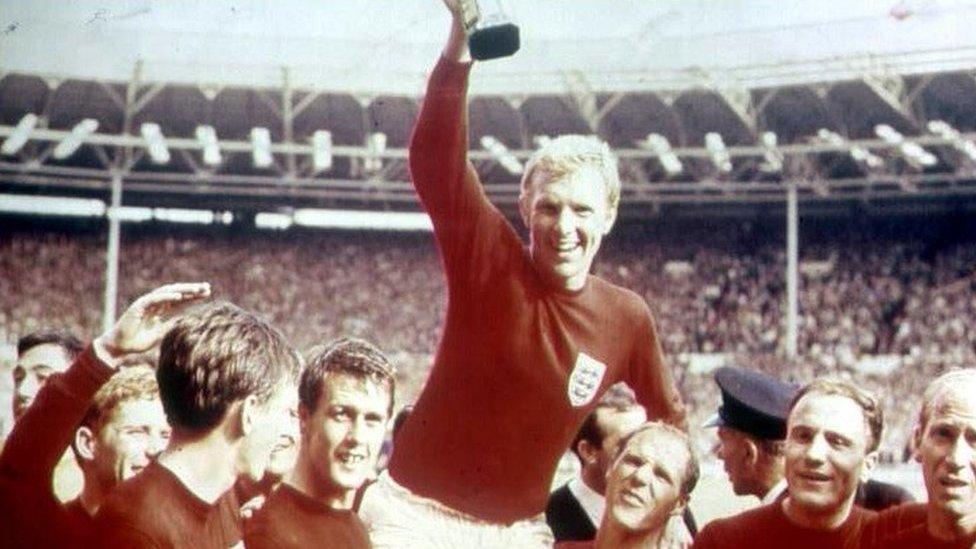
- Published12 July 2016
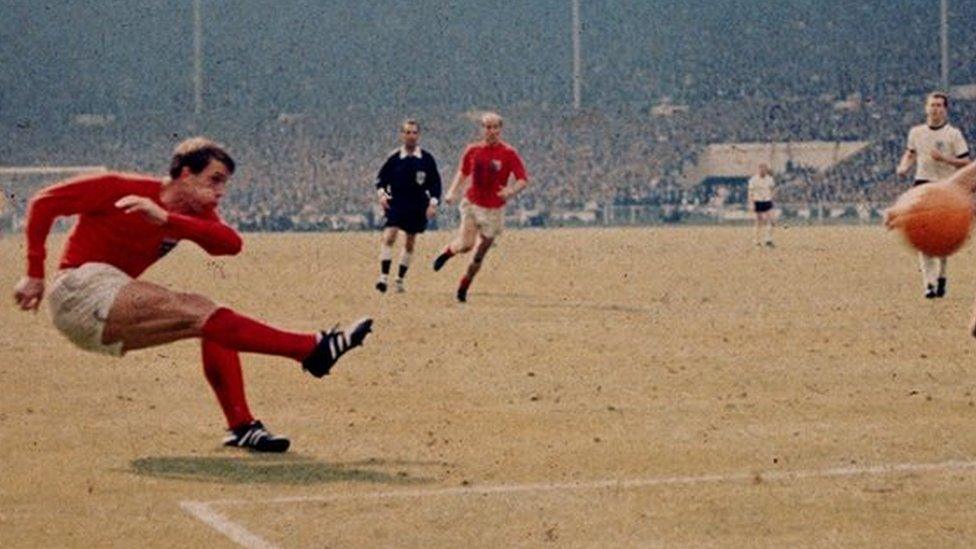
- Published6 July 2016
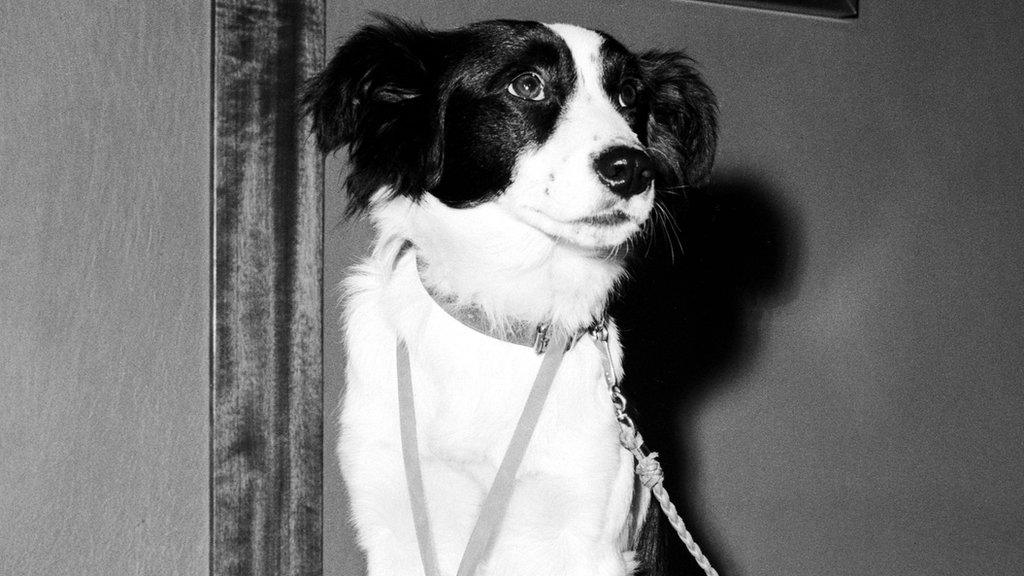
- Published25 June 2016

- Published10 June 2016
